98%* of sales reps or agencies use linear sales workflows such as:
- Send an email,
- Wait 2 days,
- Add lead on LinkedIn,
- Send a LinkedIn message.
The world’s top growth teams use advanced conditions to create hyper-personalized workflows based on each lead’s actions.
In 2025, using advanced conditions within your sequences stands out as the best approach for automating your outreach on a large scale, all while maintaining a genuine human touch.
Since we know this can be time-consuming, we’ve gathered 15 multi-channel outreach workflows with advanced conditions, so you can send them directly to your lemlist account and automate your outreach completely.
* Based on 400 million campaigns sent via lemlist over the past 5 years.
Top 15 multi-sender workflows with advanced conditions to engage at scale
With lemlist, you can tailor your outreach process at scale to automatically respond to each prospect’s interaction with your campaign in a human way for higher conversions.
It allows you to add as many advanced conditions as you desire in your sequences, leveraging information about your leads, their interactions with your emails, LinkedIn messages, and more!
You can add advanced conditions to your campaigns during lemlist’s 14-day free trial and access unlimited workflows in the Sales Engagement plan.
To test them out start your free trial here or upgrade your lemlist plan here

Here are the top 15 multi-channel campaign templates with advanced conditions for higher replies:
Use case #1: “I want to wait until my leads accept me on LinkedIn before continuing my campaign.”
Use this condition if you want to ensure that your prospects know about you before reaching out to them.
This helps you build momentum while your leads still have you in mind and avoid over-contacting someone who isn’t interested in your offer.
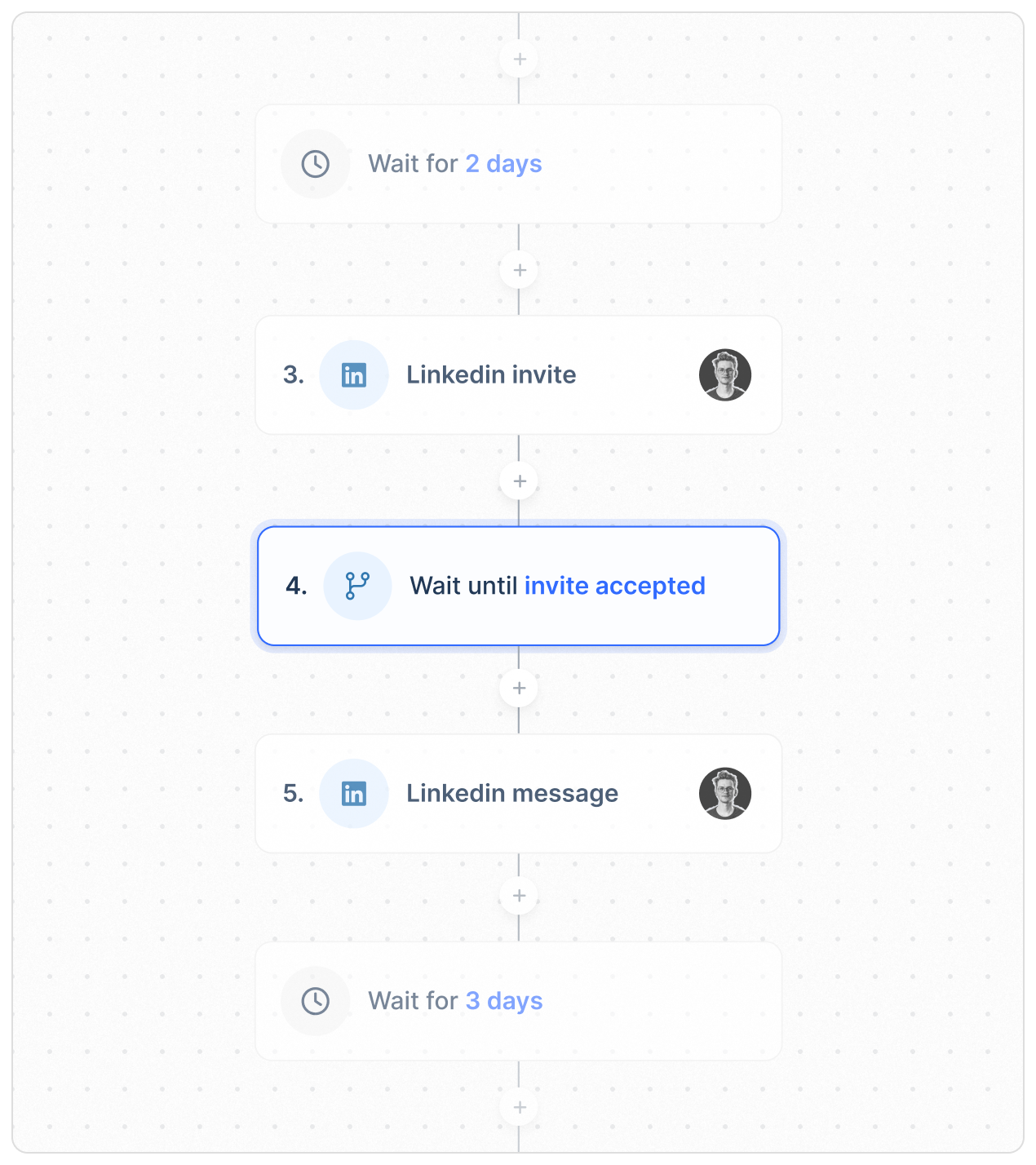
Use case #2: “If I have my leads’ LinkedIn URLs, I will reach them on LinkedIn. If not, I will reach them via email.”
This condition helps you avoid blocks due to missing lead data, and contact your leads with the information you have.
You can avoid manually figuring out where to contact specific leads and let lemlist do the hard work of sorting channels for you.
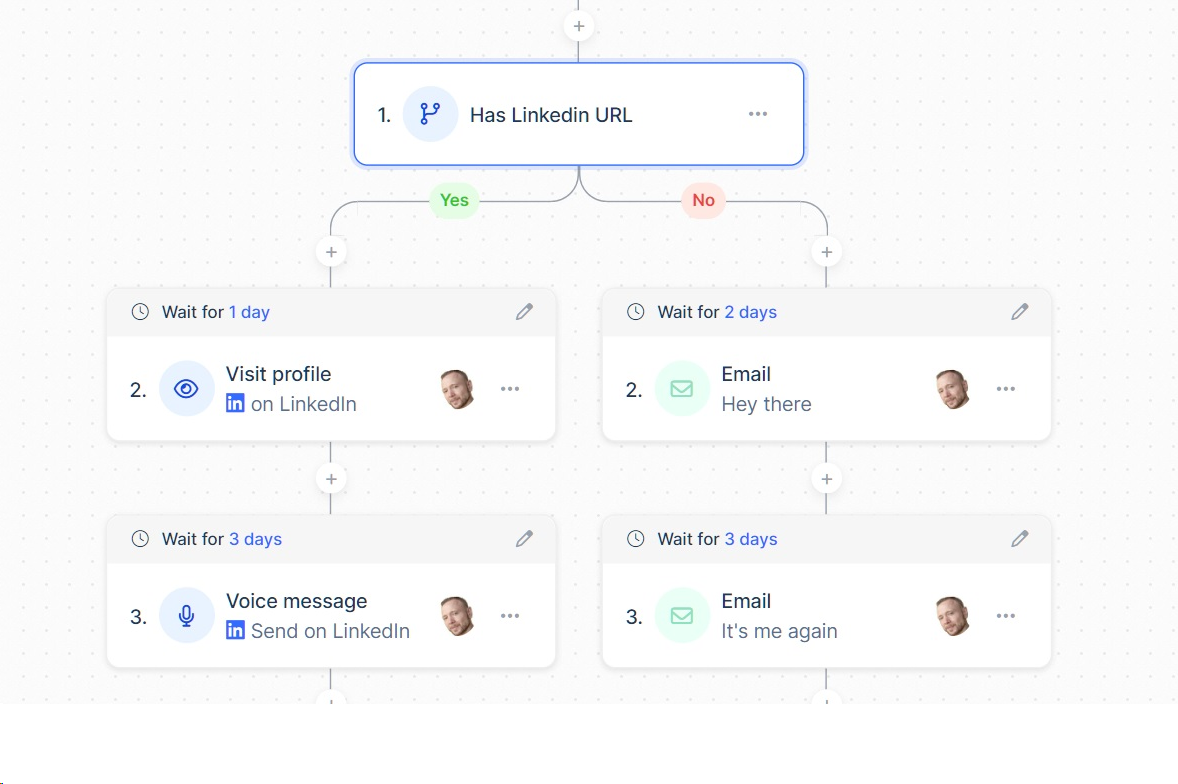
Use case #3: “If my leads accept my LinkedIn invite within 4 days, send them a LinkedIn voice message. If they don’t, send them another email.”
You can use this template to ensure that you’re reaching out to your contacts on the channel where they are most active, like LinkedIn.
You can send them a voice message if they accept your LinkedIn invitation.
If they don’t respond to your request within a specified number of days, lemlist will automatically reach out to them through another channel, ensuring the conversation stays alive.
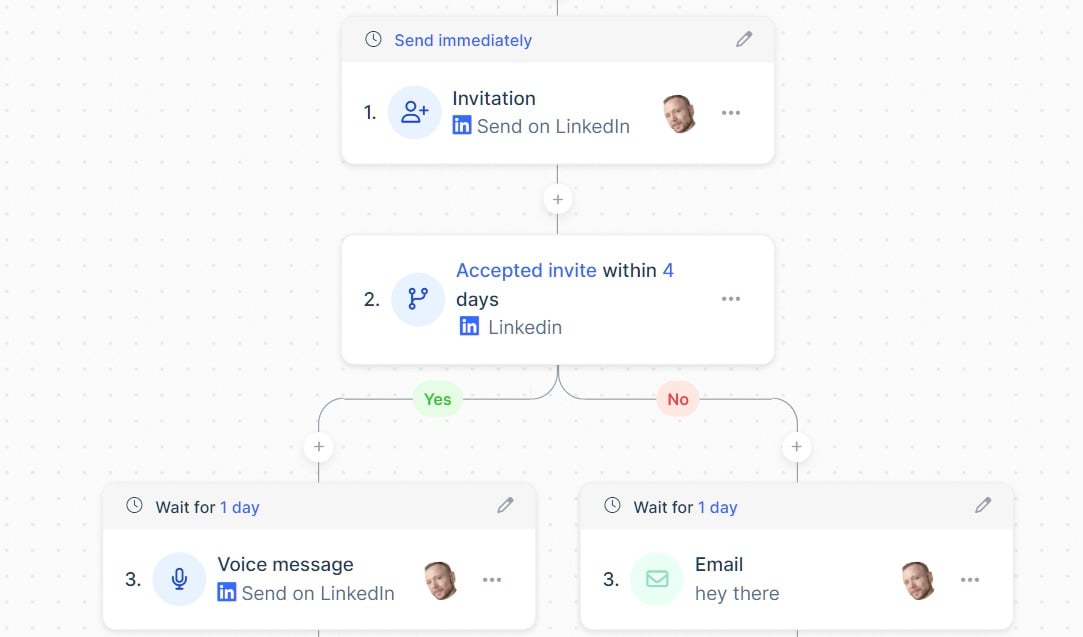
Use case #4: “I want to call my leads when they open my email.”
Use this condition to engage with your leads while they are still considering your offer, which increases your chances of connecting with them.
If they don’t open your email, it indicates that they may not be familiar with you, reducing your chances of a successful cold call.
For this reason, the call will be automatically postponed until your leads opens your email.
With lemlist, you can now integrate Ringover and Aircall, so you can either add a cold calling task, or call directly from the app. With this second option, you can track your calling activity qith the unified inbox.
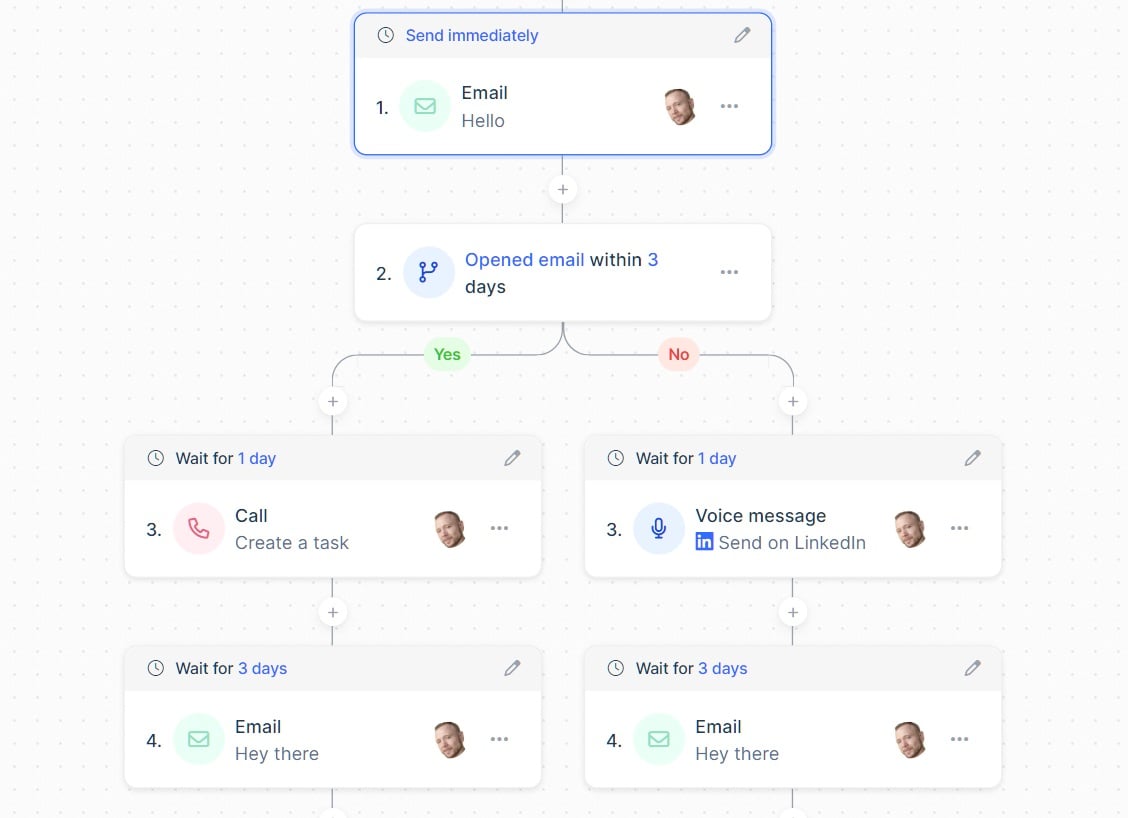
Use case #5: “I want to send a LinkedIn message when my lead opens my email.”
Add this condition to your outreach campaign to engage with your leads across multiple channels in a smooth and highly personalized way.
Reaching out to your leads on multiple channels based on their actions on the previous channel maintains the natural flow of the conversation and boosts your chances for replies.
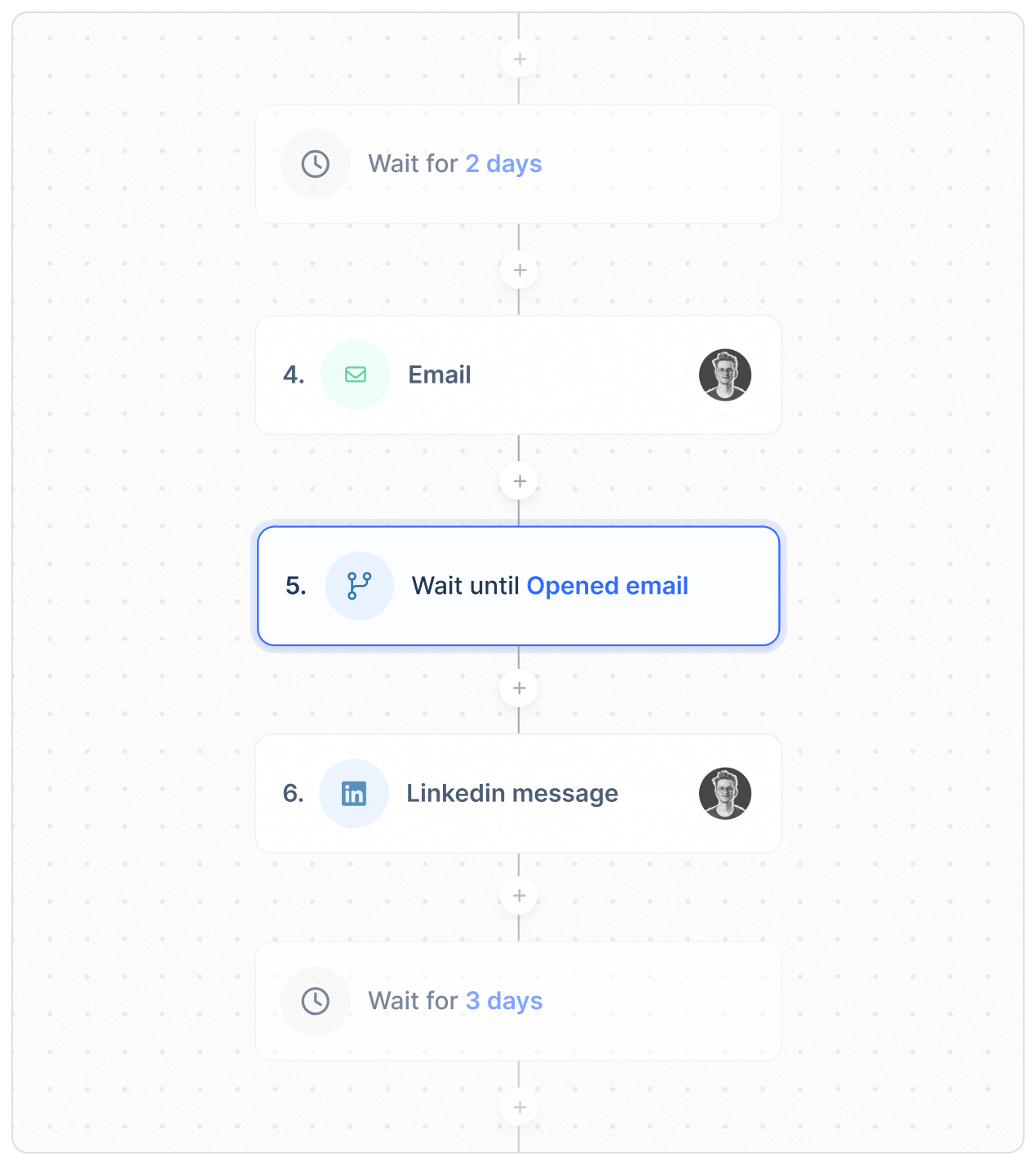
Use case #6: “Automatically send a follow-up campaign to leads who haven’t opened an email after 2 months.”
Just because your initial campaign didn’t generate results with your target doesn’t mean your offer is less valuable.
You can use this condition to retarget leads who haven’t responded and test out an alternative strategy or outreach approach.
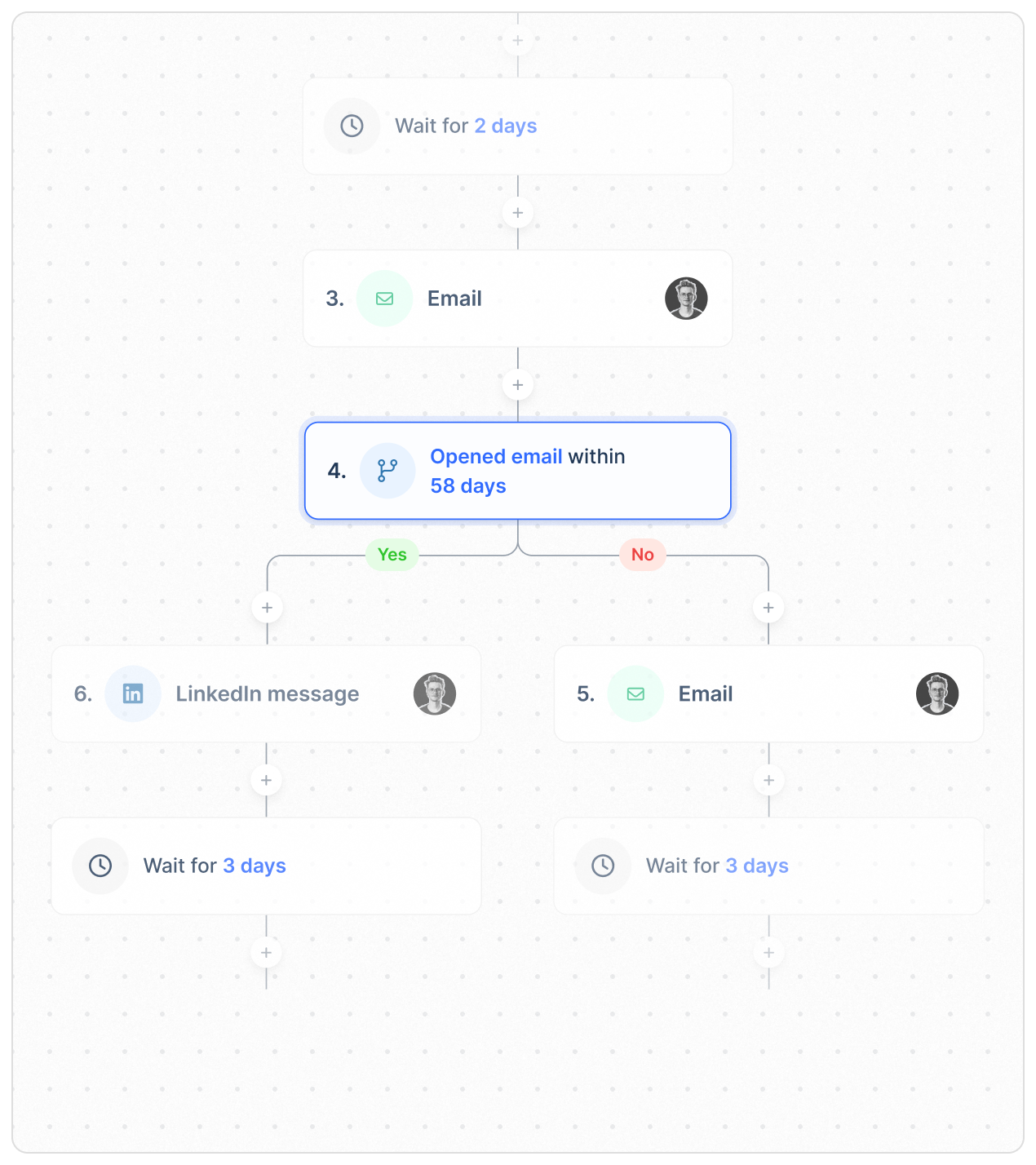
Use case #7: “Automatically send an email when someone books a meeting through lemcal.”
Use this condition to send a confirmation to your leads you’re going to meet, and eliminate any potential friction by providing necessary information.
If they don’t schedule a meeting with you, you can automatically send a follow-up that boosts your credibility and encourages your leads to book a call with you.
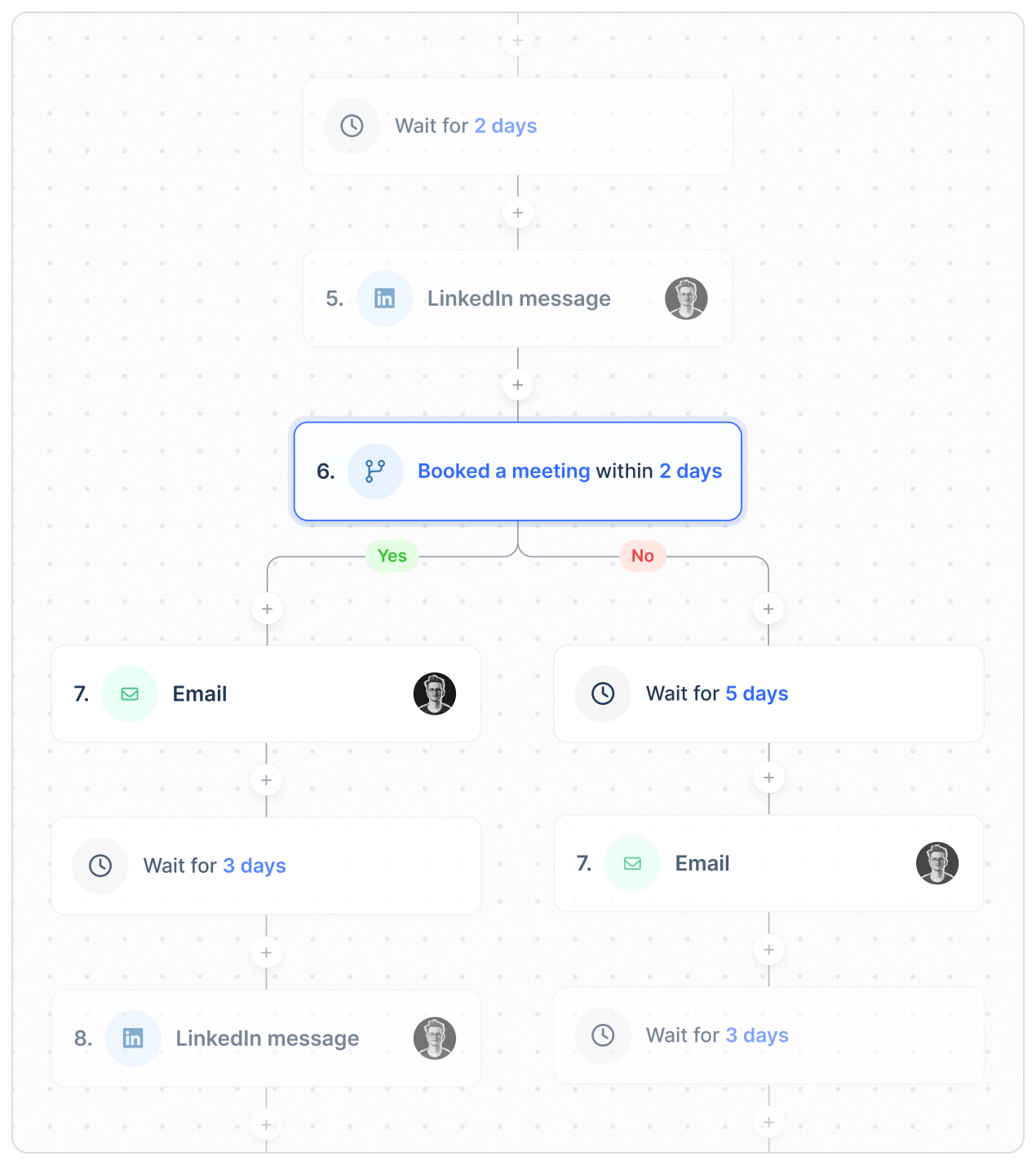
Use case #8: “I want to send 2 different emails depending on whether the lead clicked on the link from my email within 3 days.”
If you want to get replies from your prospects, you need to ensure your emails are connected to each other, and your sequence actually makes sense as a whole, not just individual messages.
Crafting email content based on your leads’ clicks from the previous email demonstrates that you are tracking their actions to provide better help.
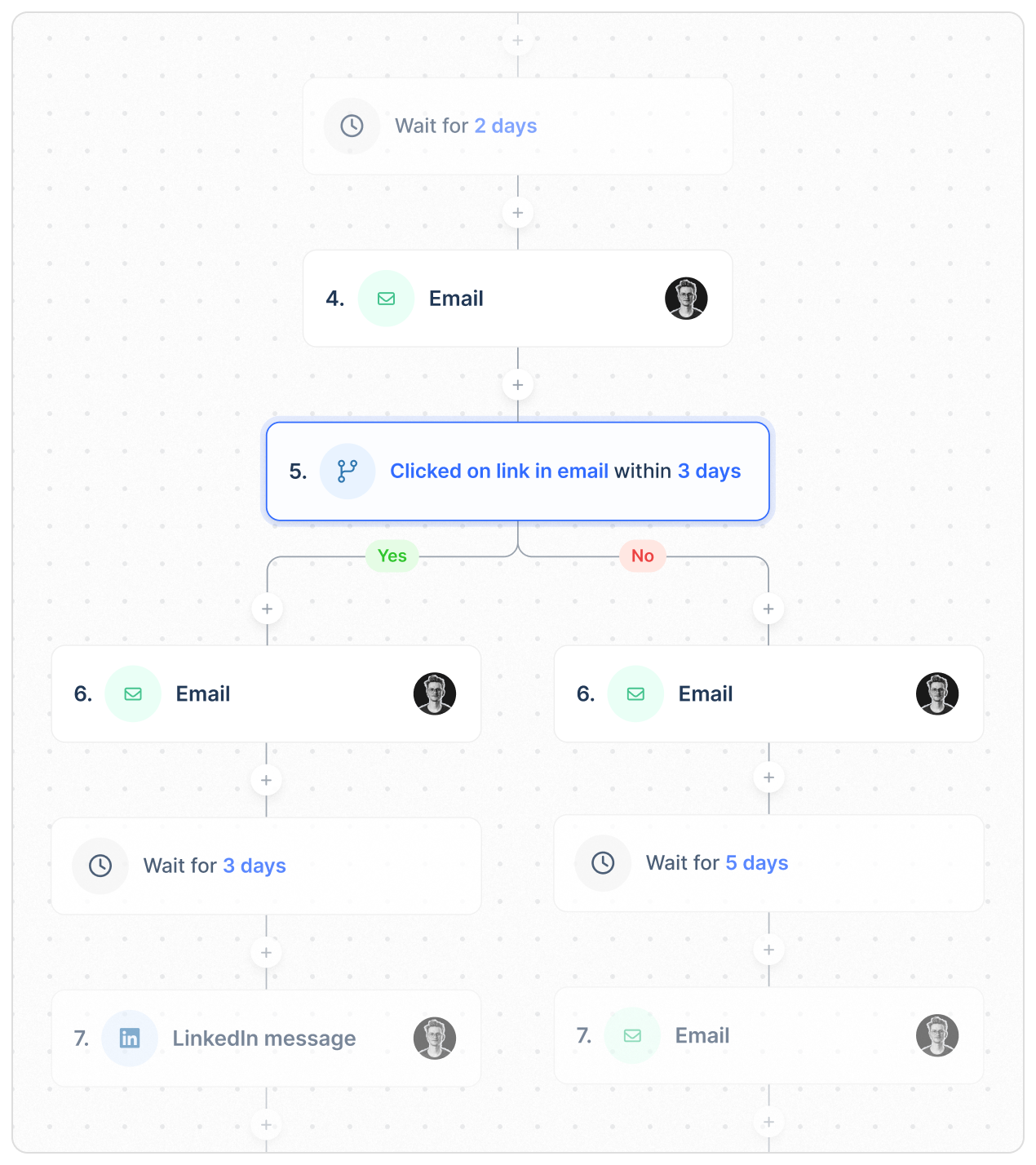
Use case #9: “If my leads open my cold email, send them a LinkedIn invite. If they don’t, send them another follow-up email.“
Since your leads have opened your email, you can automatically reach out on another channel, such as LinkedIn, to increase your chances of getting replies.
If they haven’t opened the email, you can give it another try via email to remain at the top of your prospects’ minds.
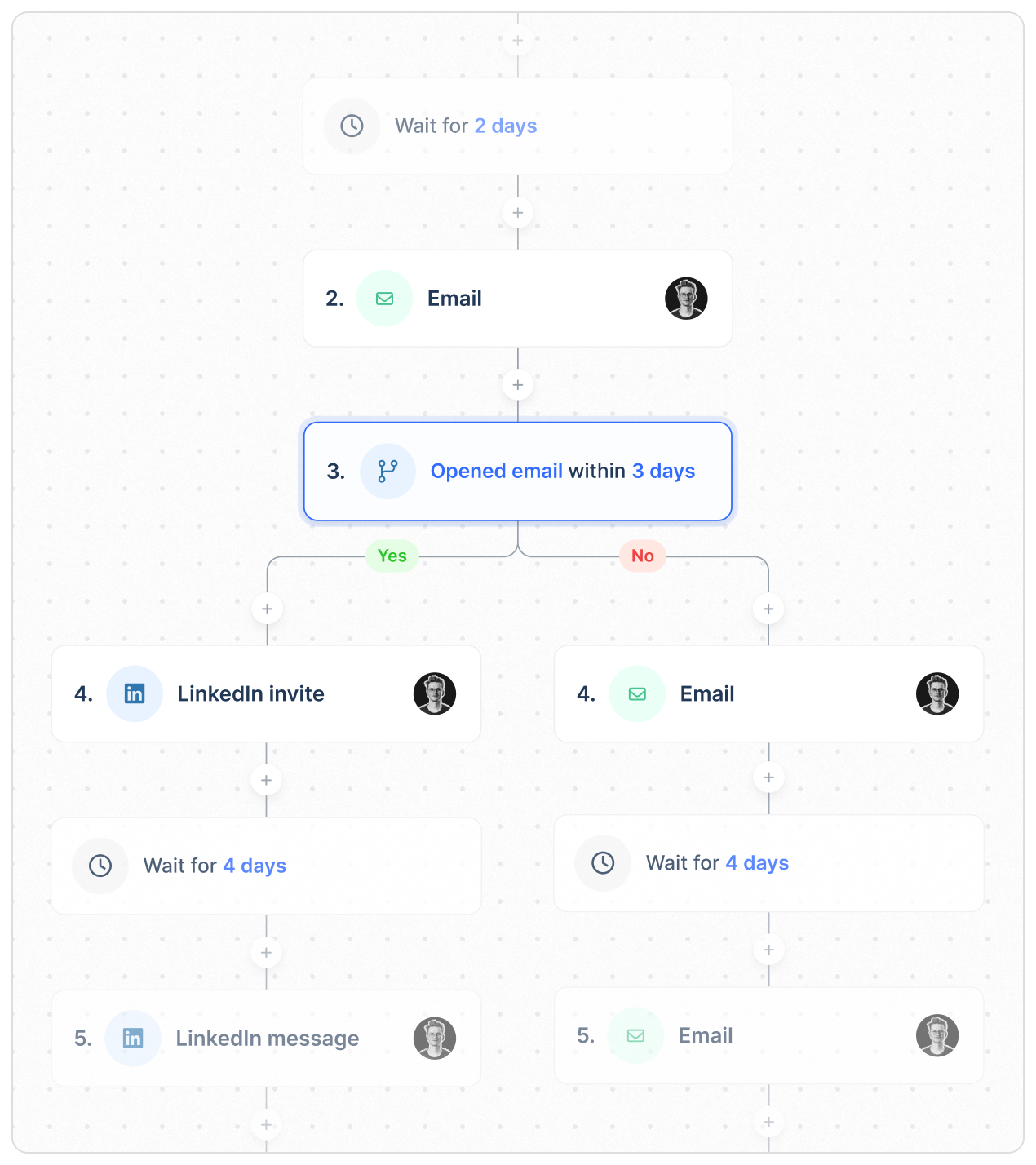
Use case #10: “If they clicked on the link in an email, send them a LinkedIn message. If they haven’t, send them an email.”
Use this prompt if you want to ensure your leads click on the link by testing out different approaches, such as subject line or email.
If they engage with your content, boost your connection even further by linking on a new channel.
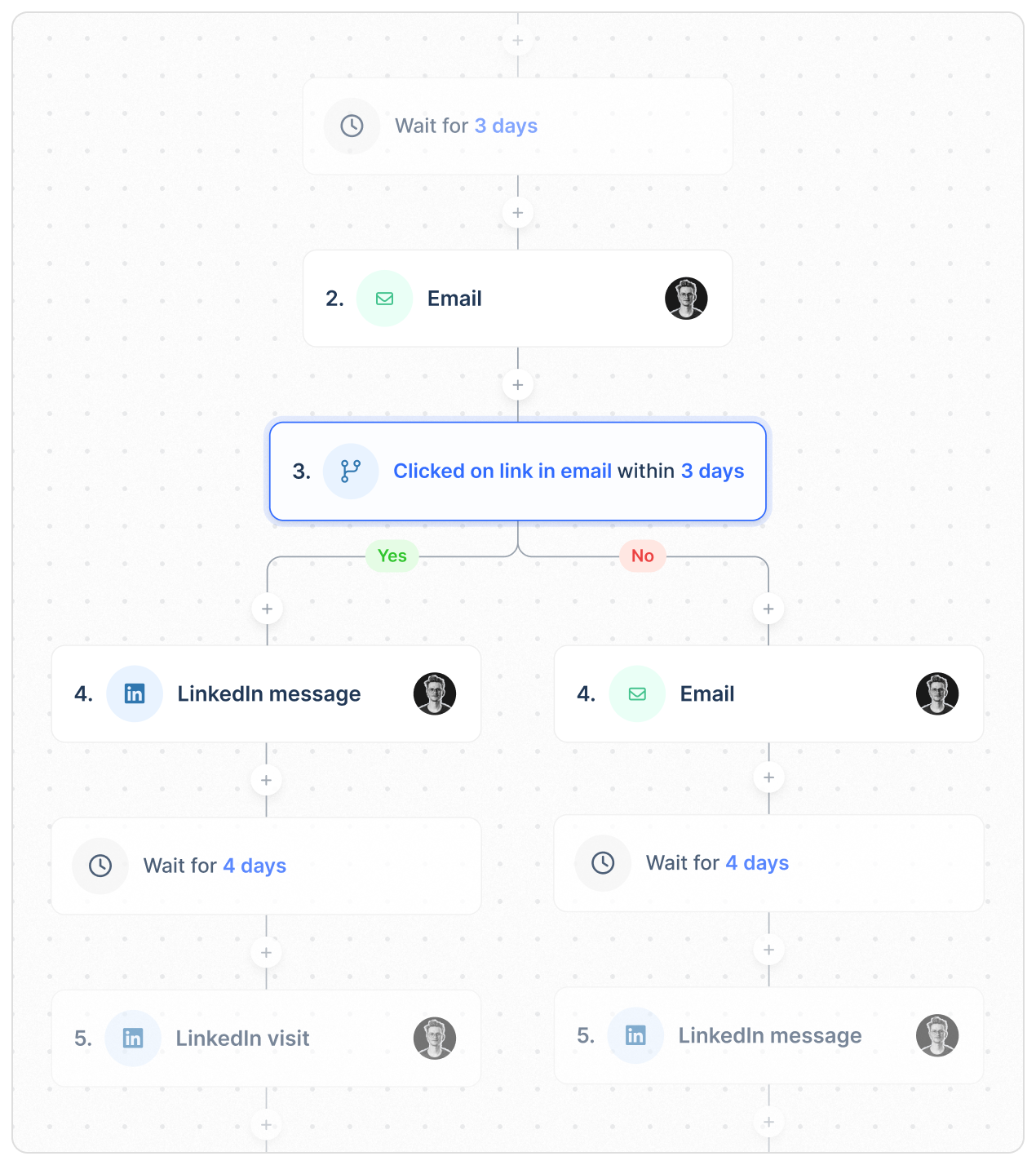
Send a video to your leads, for example a 45-second Loom video (ideally, personalize it at scale with tools like Sendspark or Repliq): your response rate will be multiplied by at least 2. Then add a condition to your lemlist sequence if the lead has clicked on the video link, and call him within 24 hours.

CEO @Acquido
Use case #11: “If my leads accept my LinkedIn invite within 10 days, send them a LinkedIn message. If not, create a manual task to remove the connection request and try another approach after 3 weeks.”
You can also use advanced conditions to stop unwanted actions on autopilot and redirect your approach after an unsuccessful attempt.
In this example, you can ensure to reach out only if leads are active and interested enough to accept your LinkedIn invite within the short time frame.
If not, you can stop your efforts, and try again later.
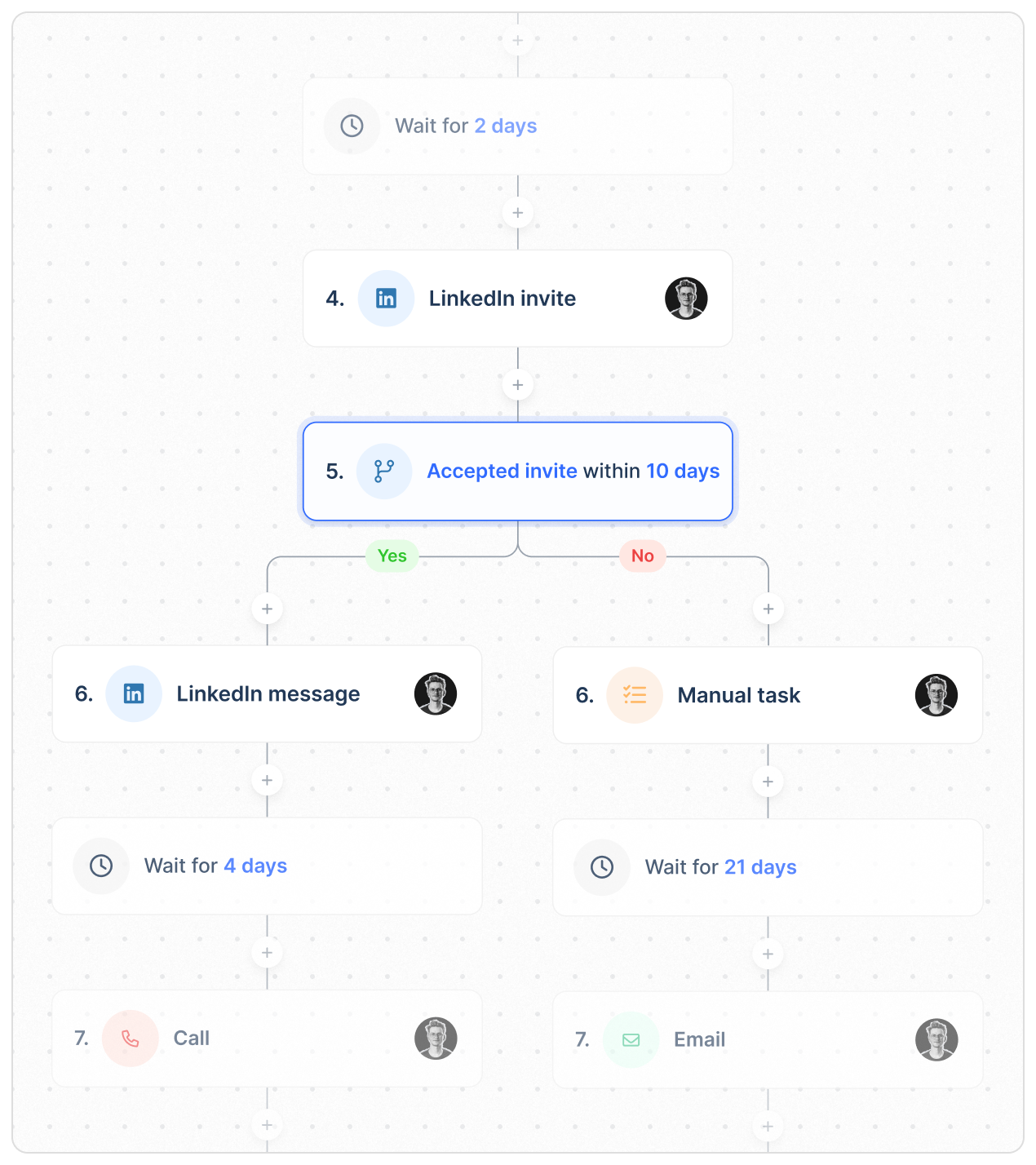
Use case #12: “If I have leads’ emails send them an email. If I don’t, reach them on LinkedIn.”
Use this condition to automatically prioritize the channel depending on the leads’ available data.
Contrary to the example above, you can add it to prioritize reaching out through email over LinkedIn, and still use LinkedIn if you don’t have verified email addresses.
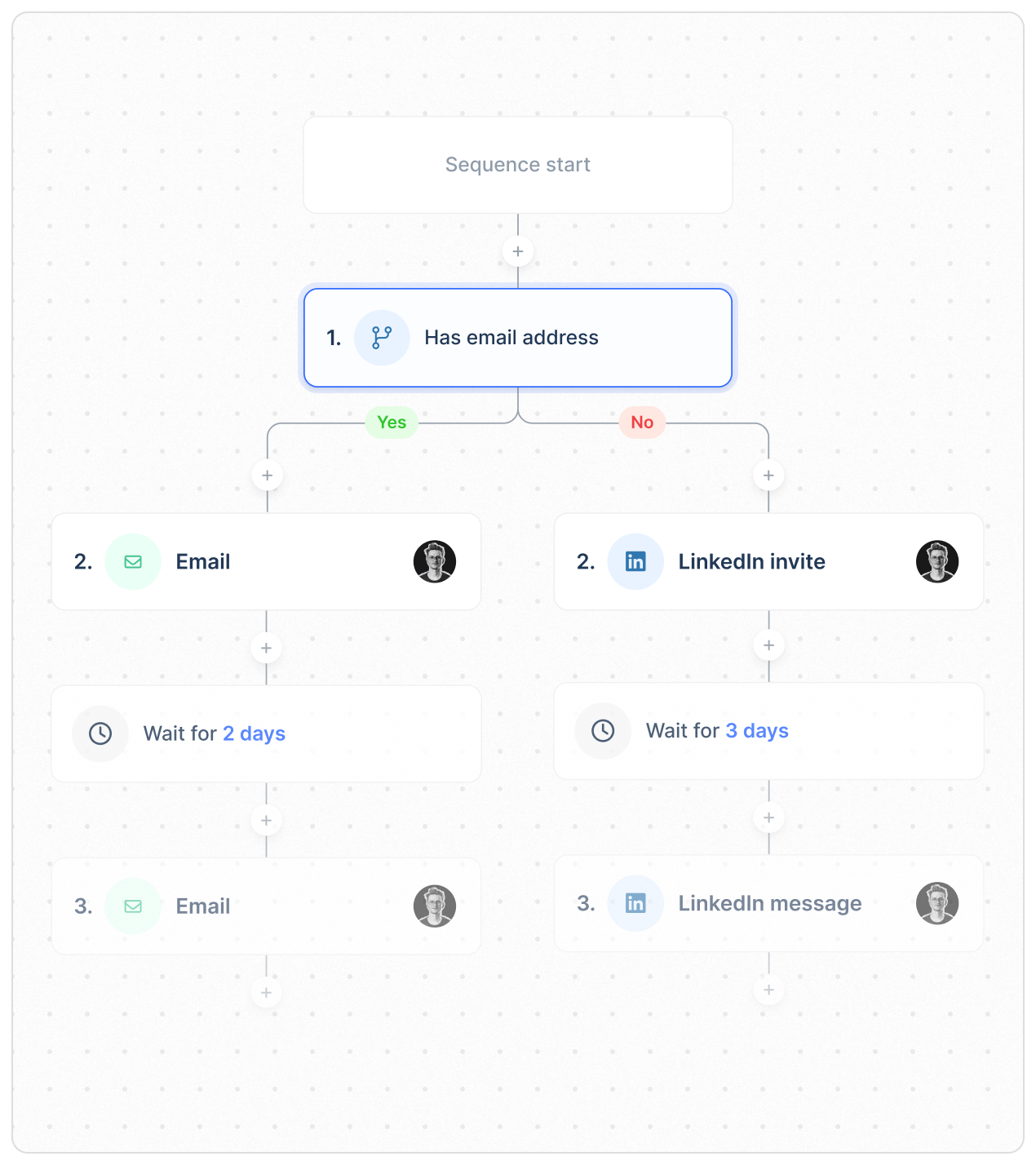
P.S. You can use lemlist to find 80%+ verified emails within seconds, 100% on auto-pilot!
Use case #13: “Switch to a full email campaign if a lead hasn’t accepted a LinkedIn invite. Otherwise, continue outreach on LinkedIn”
You can use this advanced condition if your leads are more active on LinkedIn, therefore increasing chances for replies on their preferred channel.
If they quickly accept your LinkedIn invite, you can assume they are active, therefore a full LinkedIn campaign will be successful.
If they don’t accept your LinkedIn invite, you can still contact them by email, and add LinkedIn in later steps.
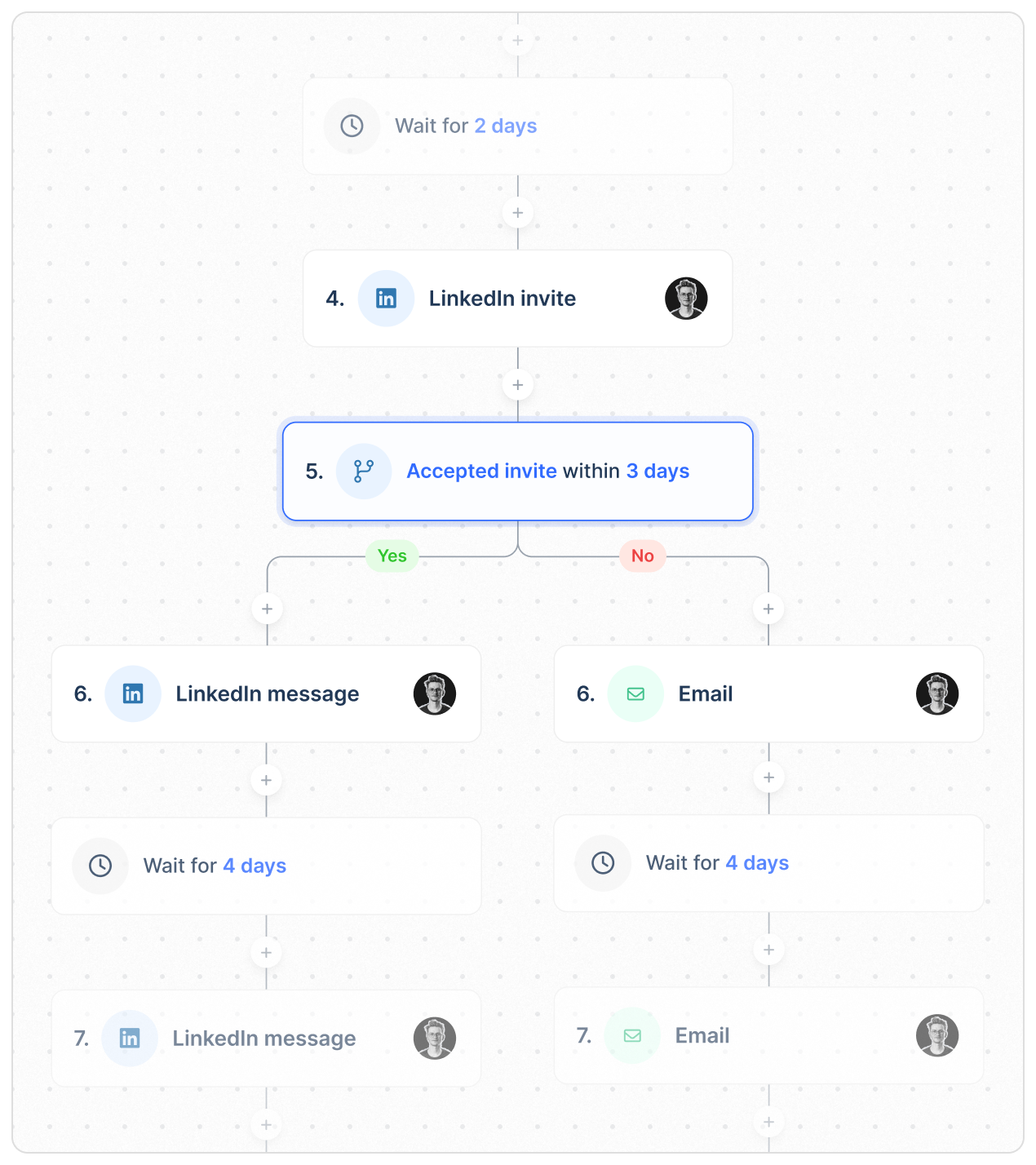
Use case #14: “If a lead booked a meeting, don’t call them. If they haven’t, call them.”
Use this condition for a more aggressive approach where you want to ensure you talk with your contacts no matter what.
If they book a meeting with you, you can automatically avoid additional cold calls and appearing too pushy.
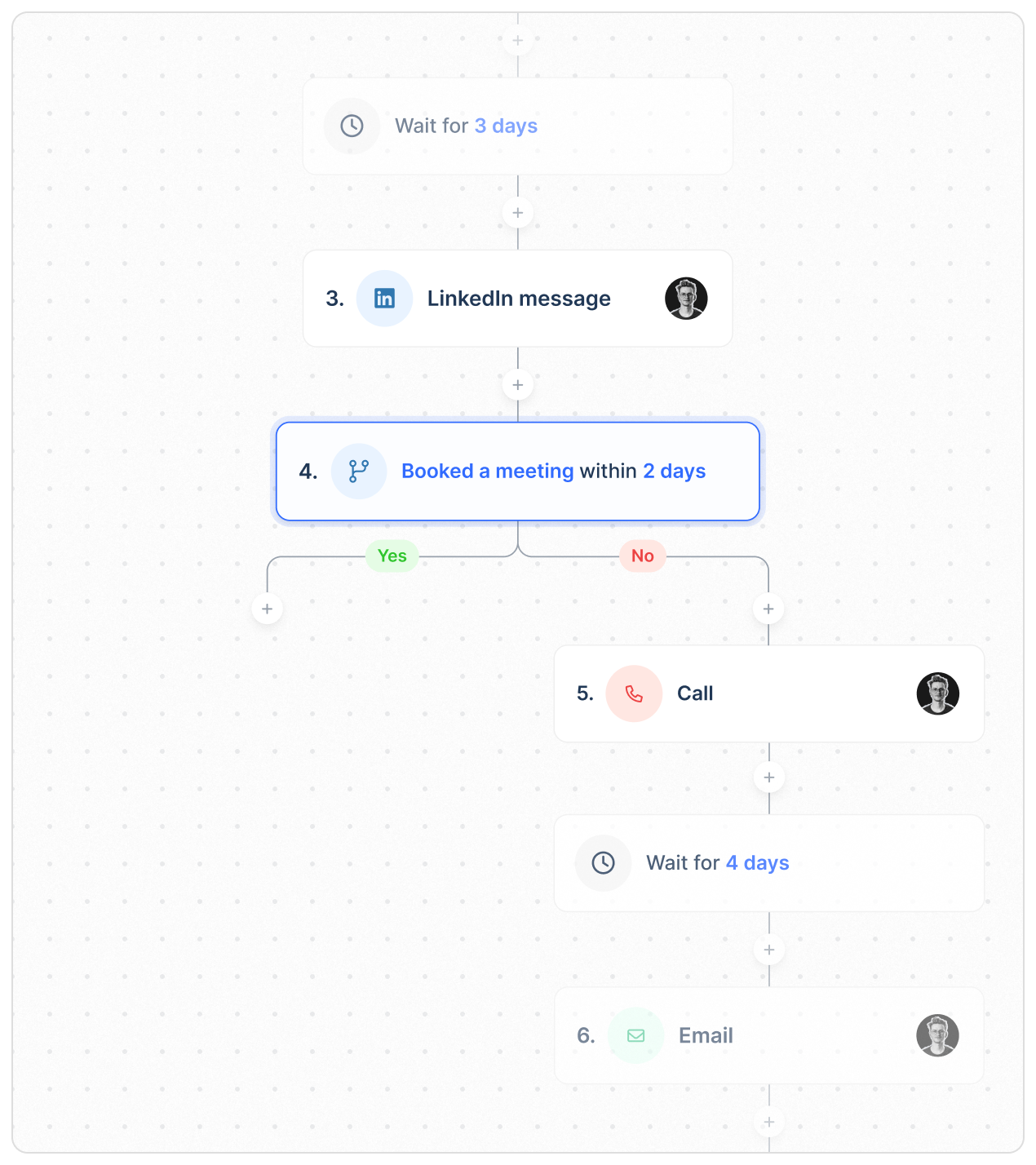
Use case #15: “If a lead unsubscribed from the email list, then do an API call to update the CRM.”
This condition is especially useful if you’re doing any sort of email marketing and wish to remove the contacts that unsubscribed from your updates.
It will help you avoid complaints which protects your email deliverability and ensures your messages reach your target audience.
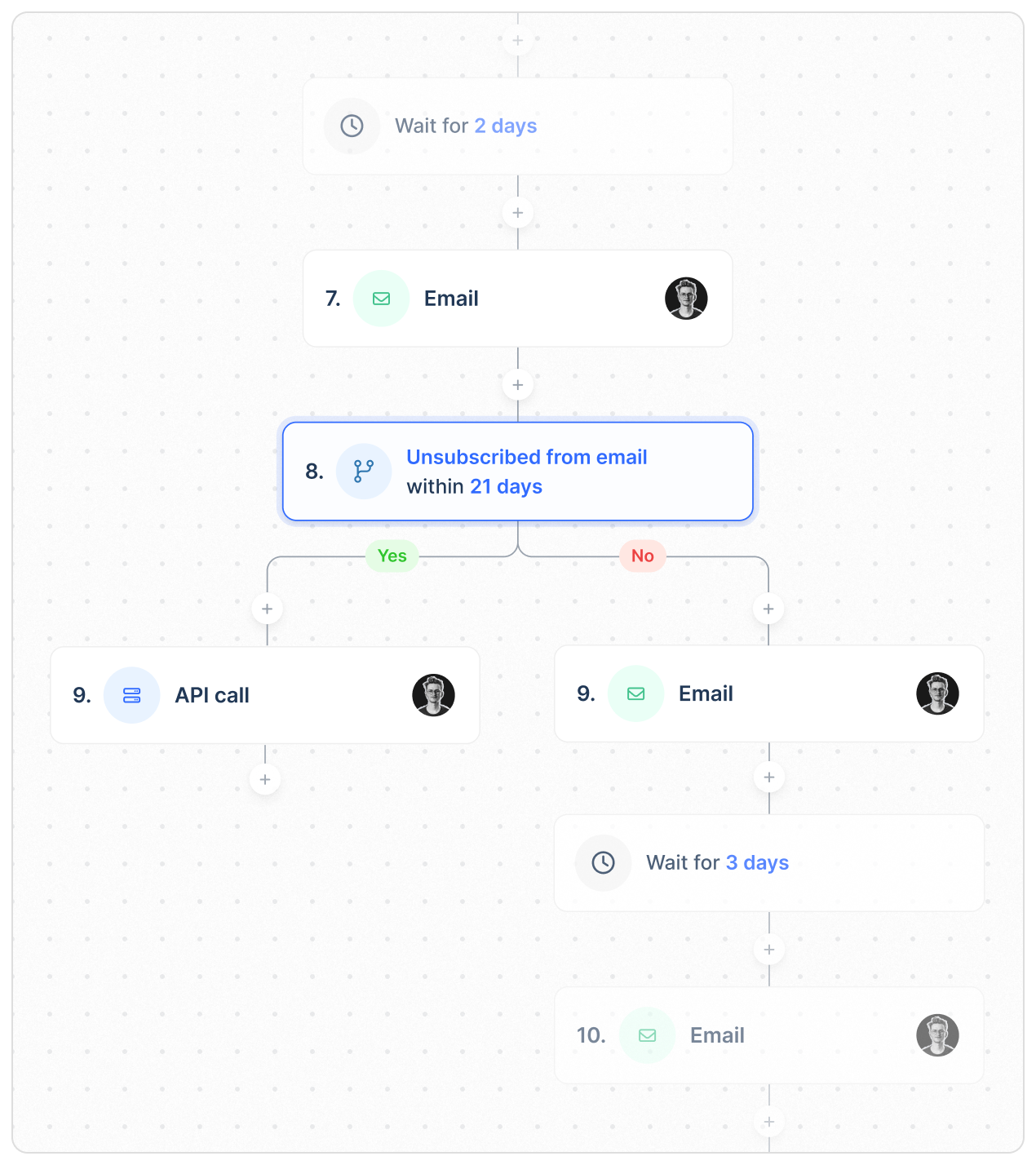
Key takeaways
Adding advanced conditions to your outreach helps you engage with your prospects at scale, in a human way, on their preferred channel, when they are most active.
With lemlist, you can create multi-channel sequences and sub-sequences with advanced conditions based on each lead’s interactions with your campaign. This can result in a 4x improvement in your outreach results.
By applying the advanced conditions and multi-channel templates, you can:
✅ Eliminate manual and non-valuable outreach tasks, such as checking if your leads have accepted your LinkedIn invite
✅ Unlock complex scenarios used by the best growth teams – no need for technical expertise or third-party tools
✅ Create more accurate and personalized campaigns with less time and effort while maintaining a personalized and human touch.
Still not using advanced conditions in your campaigns?
Sign up for lemlist’s 14-day free trial and boost your conversions by 4x!
Your source of actionable outreach tips and strategies that will help you get replies and grow your business.

